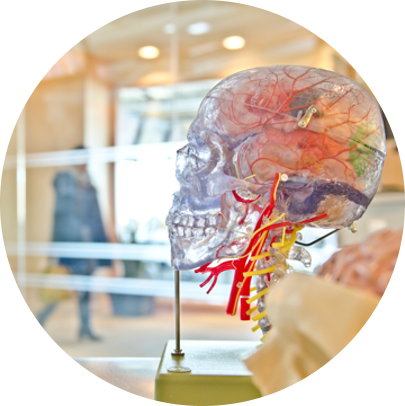Do your students use concept maps? They might be missing this key link
/If you and your students use concept mapping as a class activity or study strategy, there might be something missing. Based on research by educator and scientist Dr. Kripa Sundar, the key to an effective concept map isn’t the “node” or the key concept inside a bubble. It’s the “link,” or the relationship between concepts, that counts. Learn how to make the most of concept maps with these simple research-based tips and resources.
And continue reading for FREE stuff:
Are you going to the Learning & the Brain Conference in Boston next week? I’m hosting a book giveaway!
Do you like audiobooks? Smart Teaching is now available on Audible for free! (with a membership or free trial)
Are you reading Smart Teaching for a professional learning community? I’m hosting free Zooms!
How to get a free book, audiobook, and Zoom
Free book giveaway and signing: On Saturday, November 15 from 12:00 – 2:00pm, join me in Boston at the Learning & the Brain Conference in the Westin Hotel lobby. Bring a copy of my new book Smart Teaching with you to receive a free copy of my first book Powerful Teaching (only 25 available). Both books are available for purchase online and at the conference bookstore. I’ll have a few copies for sale in person with me, as well. (Make sure you keep an eye out for these two red flags at education conferences.)
Free audiobook: Smart Teaching is now available as an audiobook, included with an Audible membership or a free trial. A big thank you to teachers from the Morton School District in Washington state for their enthusiastic nudges to make this happen. I used AI for the voice narration, and I have many mixed feelings about it. Click here to listen to a comparison of the AI voice for Smart Teaching vs. a human narrator for Powerful Teaching. Which one do you prefer? I’m genuinely curious. Reply to this email and let me know.
Free Zooms: I host free Zooms for schools and universities who have purchased 50 or more copies of Smart Teaching for their professional learning community, book clubs, and course adoptions. If this sounds like you, or if you’re interested in a bulk discount, please contact me at ask@retrievalpractice.org.
And here are even more free resources:
Sign up for Ditch Summit, a free online conference starting in December. Some of my favorite college teaching activities are from Ditch Summit, so even though it’s geared toward K–12, I encourage all educators to sign up. My colleague Dr. Janell Blunt (with her popular whiteboard strategy) will be a featured speaker.
Download my Padlet instructions for students on how to post and comment with videos. In my transition from Flip to Padlet, my students were struggling with how to get things to show up. Feel free to copy, download, change, and use my slide deck.
The key to concept maps? Linking words
As cognitive scientist and educator Dr. Kripa Sundar explains in our book Smart Teaching Stronger Learning:
“What differentiates an effective concept map from other graphic organizers, or even a paragraph or list of responses? Teachers and learners typically focus on big concepts and nodes during learning, but often expertise comes from seeing how concepts are connected with linking words.”
In a recent podcast episode with Cult of Pedagogy, Dr. Sundar shares examples and research on how linking words are the key to effective concept maps. For example, imagine two concept maps that identify the relationship between apples and pie. One student might use the linking words “taste best in” to connect apples with pie, whereas another student might use the linking words “are a filling in” to connect apples with pie.
Which of these linking words is more effective for learning, taste or filling?
The more specific, the better. Often, students create a concept map with linking words that describe a general relationship rather than a specific connection. The absence of students’ linking words can highlight possible confusion or gaps in understanding, as well. A student’s response depends on context and prior knowledge, as well as the guiding question being asked.
Dr. Sundar’s key tip: When your students are concept mapping, make sure they explicitly label the relationship between the two concepts they are connecting. Concept mapping can be as easy as apple pie, but make sure you include the links.
Learn about Dr. Kripa Sundar
Dr. Kripa Sundar (NarayanKripa Sundararajan, she/her) is the Founder and Lead Consultant at EdTech Recharge in Irvine, California. Her boutique impact research and consulting firm supports mission-driven education leaders to execute evidence-based product strategy toward implementation and measurement at scale, including global companies across the United States, United Kingdom, Canada, Spain, Australia, and India. She earned her Ph.D. from Washington State University.
Dr. Sundar is also an adjunct professor and the author of a book for children and their caregivers, entitled How Do I Learn. She has featured articles in Edutopia and in the American Educator.
Additional resources from Dr. Sundar:
Another interview with Cult of Pedagogy on how to read academic research
A YouTube video series for teachers with even more tips
A practice guide on meta-analyses and what Hattie’s “scores” really mean
Recommended publications by Dr. Sundar:
Sundararajan, N. K., Adesope, O., & Cavagnetto, A. (2018). The process of collaborative concept mapping in kindergarten and the effect on critical thinking skills. Journal of STEM Education, 19(1), 5–13.
Sundararajan, N., & Adesope, O. (2020). Keep it coherent: A meta-analysis of the seductive details effect. Educational Psychology Review, 32(3), 707-734.
Wang, Z., Adesope, O., Sundararajan, N., & Buckley, P. (2021). Effects of different concept map activities on chemistry learning. Educational Psychology, 41(2), 245-260.


















